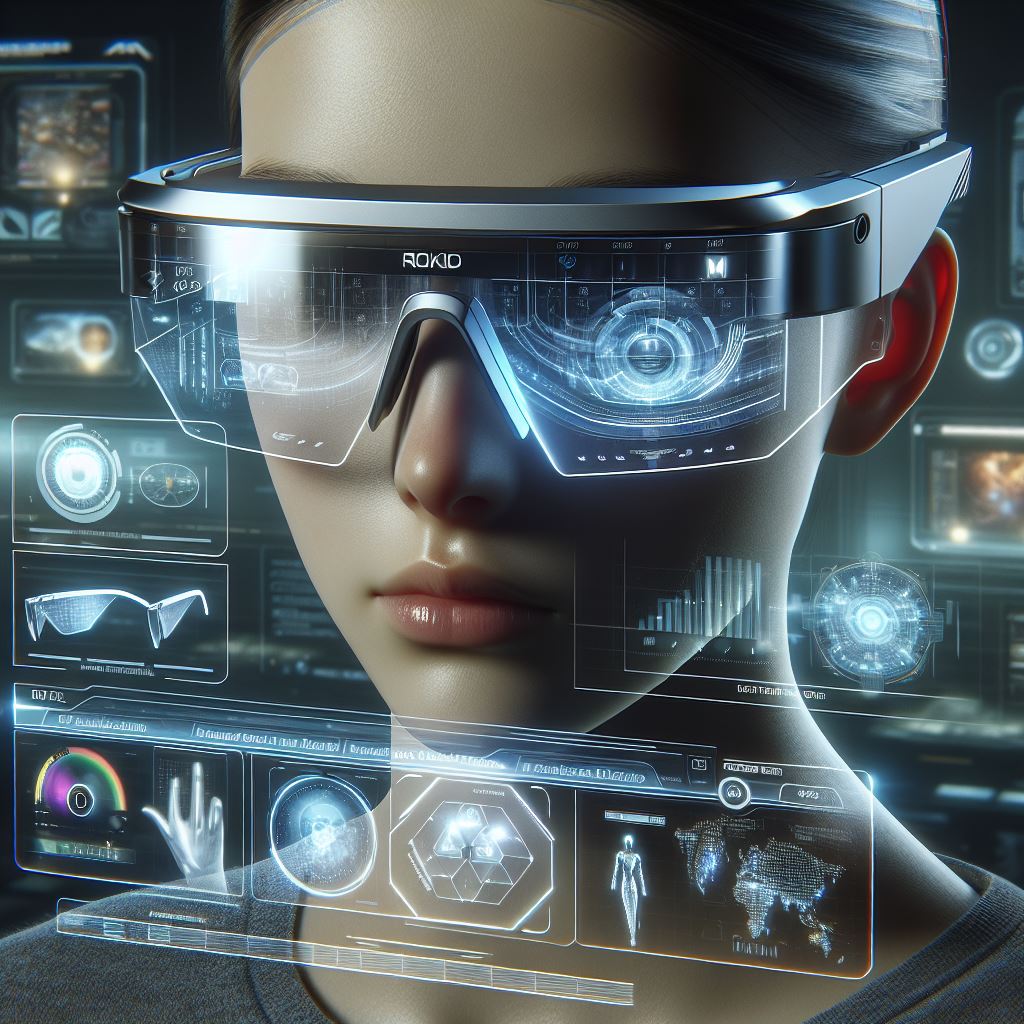Dive into the Digital Deep End: Your Guide to the Awesome World of Virtual Reality (VR)!
Ever dream of stepping inside your computer? Of exploring alien planets, battling dragons, or learning about ancient history as if you were actually there? Well, buckle up, because that’s the magic of Virtual Reality (VR)! It’s not just a futuristic fantasy anymore – VR technology is here, it’s exciting, and it’s constantly evolving.
Think of VR as a digital doorway that transports you to entirely new realities. It uses clever tech to trick your senses, making you feel like you’re somewhere else entirely. Ready to explore the key players and possibilities in this mind-bending world? Let’s jump in!
The Gear That Makes the Magic Happen: VR Head-Mounted Displays (HMDs)
The heart of the VR experience is the headset strapped to your face. These aren’t your grandpa’s goggles! They’re sophisticated pieces of tech with screens, sensors, and lenses designed to immerse your vision. We can broadly categorize them into two main types:
1. Go Solo: Standalone Headsets
These are the rockstars of VR accessibility! They have all the processing power and battery built right in, meaning no messy wires tethering you to a computer. Just put it on and you’re ready to explore.
- Meta Quest 2: A hugely popular entry point, offering a fantastic balance of performance and affordability.
- Meta Quest 3: The upgraded big brother, boasting even better visuals, processing power, and mixed reality capabilities.
- Meta Quest 3S: Think of it as the Quest 3’s cool younger sibling – similar power but at a more wallet-friendly price.
2. Powerhouse Partners: Non-Standalone Headsets
These headsets are the heavy hitters, often delivering the most visually stunning and complex VR experiences. However, they need to be connected to a separate device, like a powerful PC or a gaming console.
- Meta Quest Pro: A bit of a hybrid! It can go standalone, but really shines when connected to a PC for advanced VR and mixed reality work.
- Oculus Rift (Legacy): One of the pioneers, requiring a PC connection.
- HTC Vive (Legacy): Another early player, also needing a PC.
- PlayStation VR (Legacy): The gateway to VR on the PlayStation console.
- Pimax 8K (Enthusiast): For those who crave ultra-high resolution, requiring a beefy PC.
- Samsung Odyssey+ (Legacy): Another PC-powered option with impressive displays.
- Varjo XR-3 (Professional): A top-of-the-line headset for professional and industrial use, needing a high-end PC.
- HP Reverb G2 (Enthusiast): Known for its sharp visuals, requiring a PC.
- Magic Leap One (AR Focus): Primarily designed for Augmented Reality, it needs a separate “computing pack.”
- Microsoft HoloLens 2 (AR Focus): Another standalone AR headset, often used with external devices for specific tasks.
- Sony PlayStation VR2: The next-gen VR experience exclusively for the PlayStation 5 console, offering incredible immersion.
- Google Cardboard (Budget): A super simple and affordable way to dip your toes into basic VR using your smartphone!
Feeling the Movement: VR Motion Tracking Equipment
Just seeing isn’t enough – VR needs to know where you are and how you’re moving to truly immerse you!
1. Freedom to Roam: Standalone Headsets with Inside-Out Tracking
These headsets use built-in cameras to see the world around you and track your movements without the need for external sensors. It’s like having a digital guardian keeping tabs on your position!
- Meta Quest 2: A master of inside-out tracking, letting you move freely within your play space.
- Meta Quest 3: An even smarter tracker, offering improved accuracy and environmental understanding.
- Meta Quest 3S: Shares the Quest 3’s excellent inside-out tracking.
- Meta Quest Pro: Takes inside-out tracking to the next level, crucial for its advanced mixed reality features.
2. External Eyes: Non-Standalone Headsets with Inside-Out Tracking (and Sometimes External Help!)
Some PC-powered headsets also use inside-out tracking, sometimes in combination with external sensors for even greater precision.
- HTC Vive Cosmos Elite: Offers the flexibility of inside-out tracking with the option to add external sensors for enhanced accuracy if needed.
- HP Reverb G2: Relies on four built-in cameras for its inside-out tracking.
- Microsoft HoloLens 2 (AR): Uses inside-out tracking to map your environment for seamless AR experiences.
- Magic Leap One (AR): Employs inside-out tracking for its augmented reality world.
Your Digital Hands: VR Controllers
To truly interact with VR worlds, you need more than just sight and movement – you need virtual hands! VR controllers are your tools for grabbing, pointing, shooting, and manipulating objects in these digital spaces.
- Meta Quest Touch Controllers: Your standard tools for the Quest ecosystem, known for their comfortable design and intuitive button layout.
- Meta Quest Touch Pro Controllers: The premium option, boasting incredible precision and realistic haptic feedback. They even have their own built-in tracking, so no more tracking rings!
- HTC Vive Controllers (Legacy): Accurate tracking and haptic feedback were their hallmarks, along with a unique touch-sensitive trackpad.
- HTC Vive Cosmos Controllers: Specifically designed for the Cosmos’ inside-out tracking, offering a comfortable and easy-to-use experience.
- PlayStation Controllers:
- PlayStation Move Controllers (Legacy): Wand-like controllers offering precise motion tracking for the original PSVR.
- PlayStation VR Aim Controller: Shaped like a rifle, this controller brings a new level of immersion to shooter games on PSVR.
- Valve Index Controllers (Knuckles): These are special! They can track the individual movements of your fingers, allowing for incredibly detailed and natural interactions.
- Samsung Gear VR Controller (Legacy): A simple and budget-friendly controller for the now-discontinued Gear VR.
- SteelSeries Stratus Duo: A more traditional gamepad-style controller that can work with various VR headsets, PCs, and Android devices.
Feeling is Believing: VR Haptic Feedback Equipment
VR is becoming more than just sights and sounds – it’s about feeling the digital world! Haptic feedback equipment aims to engage your sense of touch, making experiences even more immersive.
- Haptic Suits and Vests: Imagine feeling the impact of a virtual punch or the rumble of a virtual engine!
- bHaptics TactSuit X40: A full-body suit with 40 feedback points for detailed sensations.
- bHaptics TactSuit X16: A more affordable vest with 16 feedback points.
- Teslasuit (Professional): A high-end suit offering haptics, motion capture, and even biometric data!
- Haptic Gloves: Feel the texture of a virtual object or the pressure of a virtual handshake!
- HaptX Gloves (Professional): Known for their realistic force feedback.
- bHaptics TactGlove: Consumer-ready gloves providing sensory feedback at your fingertips.
- SenseGlove Nova (Professional/Research): Offers force feedback and precise tactile sensations.
- Other Haptic Devices:
- Ultraleap’s Mid-Air Haptics: Uses sound waves to create the sensation of touch without needing to wear anything!
- VR Gun Stocks (Gaming): Provide realistic weight and recoil for VR shooting games.
- Haptic Chairs and Seats (Gaming/Simulation): Like the Roto VR Chair, offering vibrations and motion simulation for seated experiences.
What Can You DO in VR? The Amazing Applications!
VR isn’t just for tech enthusiasts – it’s finding its way into all sorts of exciting areas:
- Gaming: This is where VR really shines, offering unparalleled immersion in games like “Beat Saber” (rhythm slicing!), “Half-Life: Alyx” (a groundbreaking VR adventure), and “The Walking Dead: Saints & Sinners” (zombie survival like never before!).
- Education: Forget boring textbooks! VR can take you on virtual field trips to ancient Rome, let you dissect a human heart without a scalpel, or simulate complex scientific processes.
- Healthcare: Doctors are using VR for surgical training, helping patients recover through virtual physical therapy, and even providing innovative mental health treatments.
- Entertainment: Catch a virtual concert from your living room, explore a digital art exhibition, or watch a movie in your own personal virtual cinema!
- Training and Simulation: Pilots, soldiers, and factory workers can practice complex and dangerous tasks in a safe and realistic virtual environment.
The Future is Virtual: What’s Next for VR?
The world of VR is constantly evolving, and the future looks incredibly exciting! Expect to see:
- Better Pictures: VR headsets will have even higher resolution displays and more realistic graphics, making virtual worlds feel even more real.
- More Real Interactions: Motion tracking and haptic feedback will become even more sophisticated, allowing for truly natural and intuitive interactions with virtual environments.
- VR for Everyone: Standalone VR headsets will likely become more affordable and easier to use, bringing VR to a wider audience.
- Blending Real and Virtual: VR will increasingly team up with Augmented Reality (AR), Artificial Intelligence (AI), and the Internet of Things (IoT) to create even more mind-blowing and interactive experiences.
So, there you have it – a whirlwind tour of the amazing world of Virtual Reality! Whether you’re a gamer, a student, a healthcare professional, or just someone curious about the next big thing in technology, VR has something incredible to offer. Get ready to step through the digital doorway – the adventure awaits!


